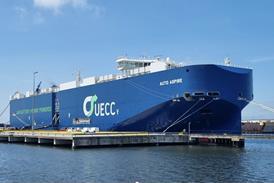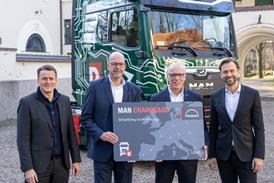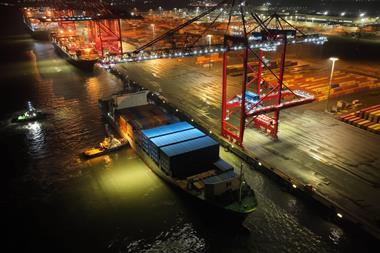
Details of the joint venture between CAT Group and Grupo Suardiaz reported last week have become clearer following comments from CAT Group’s head of the company’s Vehicle Logistics division, Antoine Nemand, who told Automotive Logistics News this week that the company is closing on its goal of full capacity for the service with further negotiations with customers planned over the next few weeks.
Following a tender process initiated by CAT last year for a partner to handle the shipping of vehicles, Suardiaz made a successful bid and announced its success in January. The joint venture – called Suardiaz Cat Shipping Company (SCSC) – actually launched operations in July.
Namand provided more details about the context of the venture and outlined how CAT was eager to directly manage the means of transport related to its business to solve certain capacity issues. The company transports more than 2m vehicles a year and opened discussions with suppliers interested in working with it on new cost effective services in Europe.
“We thought during the crisis that it was the right time to step in to secure the capacity and also to work to reduce our costs, since we have been working strongly for several months to reduce [them],” said Namand.
CAT sought initiatives with suppliers toward the setting up of a common project. “That was in December,” continued Namand, “so when Suardiaz won the business…we started discussions on a common project. After some weeks of discussion we agreed on one and decided to create the company and launch it from July 1st.”
The service now runs on two rotations between the port of Santander in Spain and the ports Le Havre, Zeebrugge, Cuxhaven, Southampton and Teesport, with CAT Group handling transport to the port, processing and delivery on from the ports of call. Suardiaz handles the shipping between the ports.
Included as part of the service, CAT Group makes pick ups from Renault’s Palencia and Valladolid plants for shipment on to Santander as well as handling vehicles from Jaguar Land Rover and Volvo, according to Namand.
“We have some regular services for Renault but we also handle spot services when there are peak volumes which is why we wanted to have such a company,” he said. “Sometimes when we have peak volumes we can use the shipments, for instance, to bring vehicles for the ‘rent-a-car’ companies from Spain.”
But the new joint venture is still looking for more capacity as the market recovers.
“We are planning to develop this activity because we are not 100% fully occupied with the ships with the business we have,” admitted Namand. “But we have a strong business development plan that we have already shared with our customers and potential customers that we will develop in the next few weeks.”
SCSC operates two vessels on a weekly service, L’Audace and the Gran Canaria Car, with the support of a third vessel from Suardiaz’s fleet.
With a combined capacity of nearly 1,000 cars per shipment, per vessel, SCSC is targeting the shipment of more than 300,000 multibrand cars in 2011. The new company is also flexible in its approach, a benefit built on the strength the two companies are afforded by the joint venture according to Namand.
“We have a certain service between the ports which is adapted to the current business we have,” said Namand, “but we might move or change this within the next month according to the new business or the evolution of the business we have with Suardiaz.”
He concluded: “We are on a long term strategy, we want to develop this activity and build something very strong.”
































